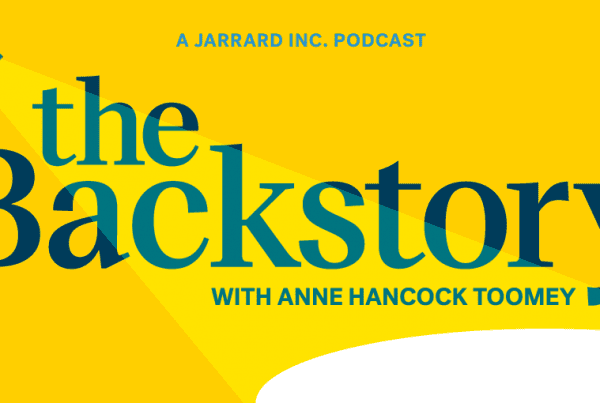The Big Story: Health care officials from four countries visit Nashville to discuss innovations
You can’t go it alone
By David Shifrin and Ellis Metz
6-minute read
If ever there was a question about whether companies, individuals or even clinicians can eschew collaboration, keep things close to the vest and do their own thing, it was answered this week with a resounding “Hell no” at the 2024 Nashville Healthcare Sessions conference, produced by the Nashville Health Care Council.
Collaboration has always been proclaimed as necessary and good for healthcare. But proclaiming isn’t the same as doing. And at this year’s three-day Sessions event, there was a notable emphasis on real-world examples of partnerships having real-world impact.
In fact, to illustrate that, last week while those 1,300 healthcare execs, observers and investors were convening in one of America’s foremost healthcare capitals, word came out that four major health systems had joined forces to launch Longitude Health, a holding company that will spin up sandbox companies to address some of healthcare’s thorniest challenges. Partnership in action.
“It’s no longer build versus buy,” said panelist Chris Altchek, founder and CEO of remote patient monitoring and chronic disease management company Cadence. “The name of the game is partnership.” He added that the best, most successful partnerships today will be fewer in number but deeper and more fully integrated. Though collaboration was the foundational theme of Sessions 24, there was a strong secondary motif that leaders must be bold to make meaningful progress towards a sustainable system of care.
Finally, in a moment where divisiveness appears to be the coin of the realm, it was stimulating to hear from the scores of speakers who shared their insights, networked and committed to making healthcare in this country fundamentally better. Which is precisely why this event merits Quick Think coverage.
Here are some sharp takes.
“Fall in love with the problem.”
That line was delivered by panelist Sanjay Shetty, president of CenterWell at Humana. His point? To clearly – and honestly – define the problem and the desired outcome and then ruthlessly work toward solving it. No mission creep, no shiny object syndrome, no talking oneself into thinking a cool idea or preferred approach is better even though it doesn’t quite address the core problem. Distraction is real and understandable. Speakers repeatedly reminded attendees that we must put energy into retaining focus and reverse engineering a solution from the need rather than building a solution in search of a problem.
The point is, after all, to connect people with care so they can live a healthier, fulfilling life. Panelist Kate Ryder, founder and CEO of Maven put it clearly and simply when she gave the example that, “Basic things like virtual care, where it’s just putting a provider in someone’s pocket—that’s a game changer for a lot of patients.”
Be empowered by the technology (finally?)
Healthcare has had data – and lots of it – for a long time. Fortunately, the tools to process and effectively use that data are maturing. In some cases, they’ve matured to achieve the stated goal of reducing friction, increasing efficiency and simply making healthcare more human again.
Colleen Nicewicz, CEO of Groups Recover Together framed the discussion around technology and patient care as a question: “How can we use technology, AI and other centralized resources as a way to prioritize the things people need help with?”
Speaker Dan Greenleaf, CEO of Duly Health and Care pointed out that technology hasn’t been built for efficiency, nor the EHR for productivity. He repeated the oft-cited connection between after-hours administrative burden – “pajama time” – and burnout. But now tech such as AI-driven ambient listening tools that can eliminate hours of documentation a day for physicians.
Dr. David Feinberg, chairman of Oracle Health put it more bluntly from the stage: “We need to fix the stupid EHR.” With perhaps only a bit of hyperbole, he said that healthcare has had people working as data clerks who are paid as physicians.
Now, though, there’s progress towards pulling together the back office and clinical office. Healthcare is starting to catch up, Feinberg observed, describing an end-to-end platform where everything from workforce management to care delivery is integrated. Imagine, he said, a nurse who was trained on chemo infusion three years ago but is about to administer it to a patient for the first time. The system should recognize this and deliver just-in-time refresher education to that nurse.
In that context, AI – or any technology – sits in its proper role as a tool, not an end product. “What we’re really delivering,” said Feinberg, “is a person sitting with a person.”
Have the tough conversations
“It took a year to convince the first pharma company to let us reveal the cost,” said Cost Plus Drug Company CEO and co-founder Dr. Alex Oshmyansky. He was referring to the company’s early days, when they were trying to establish direct relationships with drug manufacturers to remove the costs associated with PBMs. Oshmyansky and co-founder Mark Cuban had to convince a sector that it was in everyone’s best interest to make the cost of their drugs public. The tough conversations led to the discovery of common ground and now, a potentially revolutionary approach to prescriptions.
Likewise, throughout the conference there were differences in opinion expressed on stage. Up for debate were sensitive topics such as whether value-based care is the future of sustainable healthcare in this country or a “wastebasket term,” as Sen. Bill Frist put it. And the question of how much we need to rely on traditional acute hospitals for care versus what can be delivered at alternative sites? Plus, the hot button of: How do we reconcile the ongoing consolidation of healthcare organizations with the extreme fragmentation of the industry overall?
Speakers debated areas where different models or new companies can do things more effectively than health systems. Or where the scale of health systems provides resources for innovation that others can’t match.
But in all of it, in conversations between friends, competitors and partners, the basic tenants of respectful disagreement and thoughtful probing held, and the occasional tension and thoughtful challenging a reminder that groupthink is no more helpful than hostility.
Keep relationships sacred
Duly Health’s Greenleaf repeatedly spoke of the need to understand the patient and understand the clinician. “Keep that relationship sacred,” he said, no matter what approach an organization takes with technology and innovation.
Doing that means engaging patients and clinicians in the process. Dr. Lynn Simon, president of Healthcare Innovation and chief medical officer at Community Health Systems, described the process CHS went through a year ago in partnering with Cost Plus Drug Company. “We asked, ‘what are the problems our pharmacists experiencing and how can you guys solve them?’”
According to Simon, CHS carefully defined the problem then told the partner “Here’s what we need.” Simple – though admittedly not easy. The ensuing conversations let to operational efficiencies like providing meds in smaller vials and transparency around the cost of drugs being purchased so every entity involved knew exactly how the money flowed through the system. “We’d never had a conversation like that before,” said Simon.
It was a willingness from everyone to establish a relationship, build trust and then keep that connection sacred in order to stay focused on the priority. In this case – reducing prescription prices for patients.
Build with the end user in mind, and everything flows from that.
Shared ownership of problems
With the devastation of Hurricane Helene and the oncoming fury of Milton, many speakers and attendees were in the midst of disaster response and preparation. Leif Murphy, CEO of Team Health and David Dill, Chairman and CEO of Lifepoint Health, described their conversations during COVID and last week during Helene. Dill said Murphy called him and said, “Whatever you need in Western North Carolina.”
Then, in describing what it takes to sustain a successful partnership, Cadence’s Altchek said it’s having the attitude that “This is OUR problem” to solve together. It’s not a zero-sum game, and there is great value – in both business and relational terms – to acting as if you’re part of the same organization while keeping the attitude that, in a partnership, you’re a guest in someone’s home.
Nicewicz put it in very practical terms from the stage, saying, “Some gaps we can close and others we need community partners to help us close, but [technology] is a huge opportunity to asynchronously help manage and resolve patient needs.”
The consensus among speakers was to find people you trust, who you can do business with. People with the spirit of partnership and the competence to be the best.
Of course, inspirational talk only matters if it can be translated into sustainable solutions and measurable progress.
Dr. Michael Schlosser, SVP of Care Transformation & Innovation at HCA Healthcare, reminded the audience to know their priorities. “Resources are limited, so at some point you have to pick some bets,” he said. “Listen to end users, understand their pain points and what they want healthcare system to do better. Then look at the macro and ask, “What are the big challenges in healthcare delivery?” Find where those two areas overlap and go after them.”
To close, Cleveland Clinic CEO Dr. Tom Mihaljevic encouraged attendees to keep pushing. “It’s a never-ending journey. It’s a quest for perfection,” he said. It’s not something that has an endpoint, which opens worlds of possibility to doing the next great thing. Alongside good partners, of course.
Contributors: Hillary Sloan, Sarah Bass, Emme Nelson Baxter
Image Credit: Shannon Threadgill




